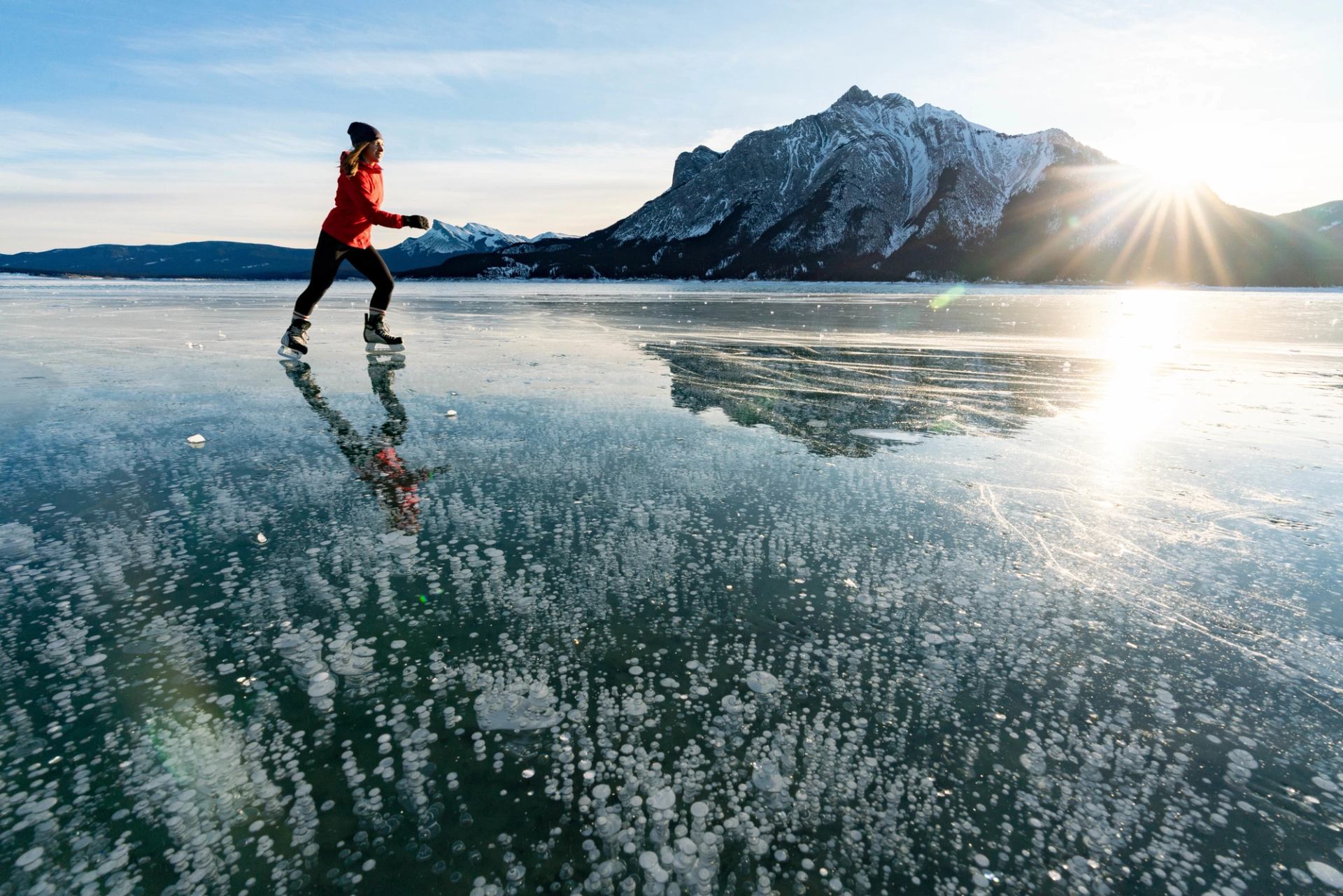Picture yourself, skates on feet, gliding amid mesmerizing panoramic views. This unforgettable natural phenomenon happens in the early days of winter in the Canadian Rockies. Before the first snow flies, the picturesque mountain lakes sometimes become glass-like sheets of ice that perfectly reflect the natural splendour around them.
The clear ice even offers a rare glimpse into the depths and wonders below the lake surface. This breathtaking scene also signals peak season for wild ice skating.
What is wild ice skating, you ask? The definition can vary, but the simplest explanation is skating on a frozen lake – bonus points if it’s newly frozen before being covered by snow. It often means getting away from the roadside lakes – which can also offer exceptional skating opportunities all winter long – and discovering new ice to carve. The thrill of the chase is half the fun, as long as proper safety precautions are taken.






